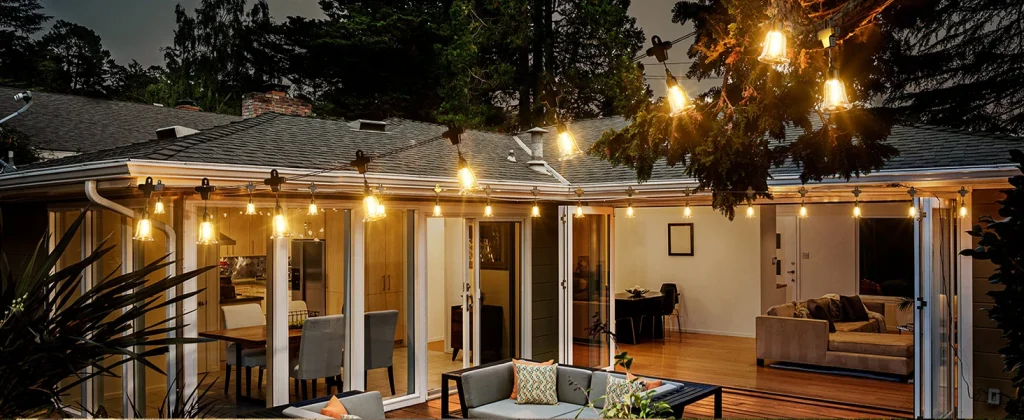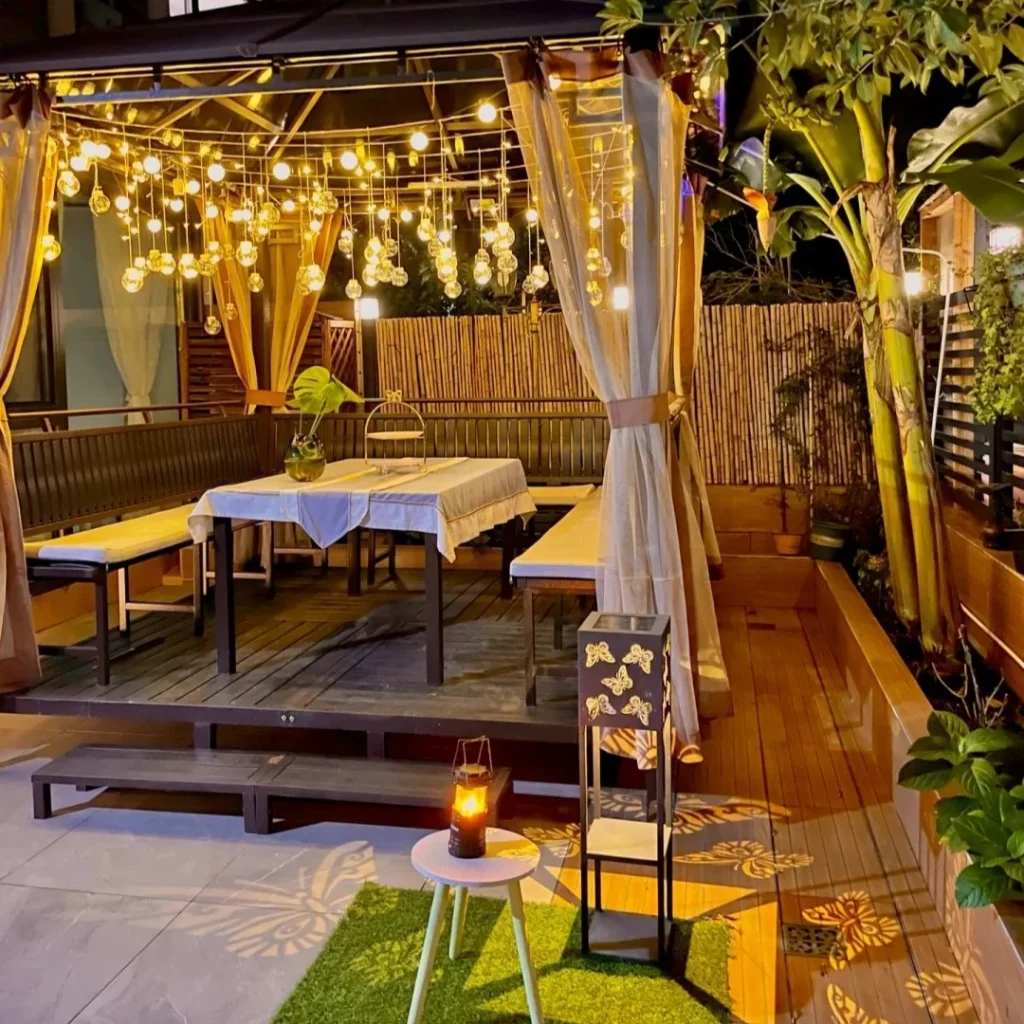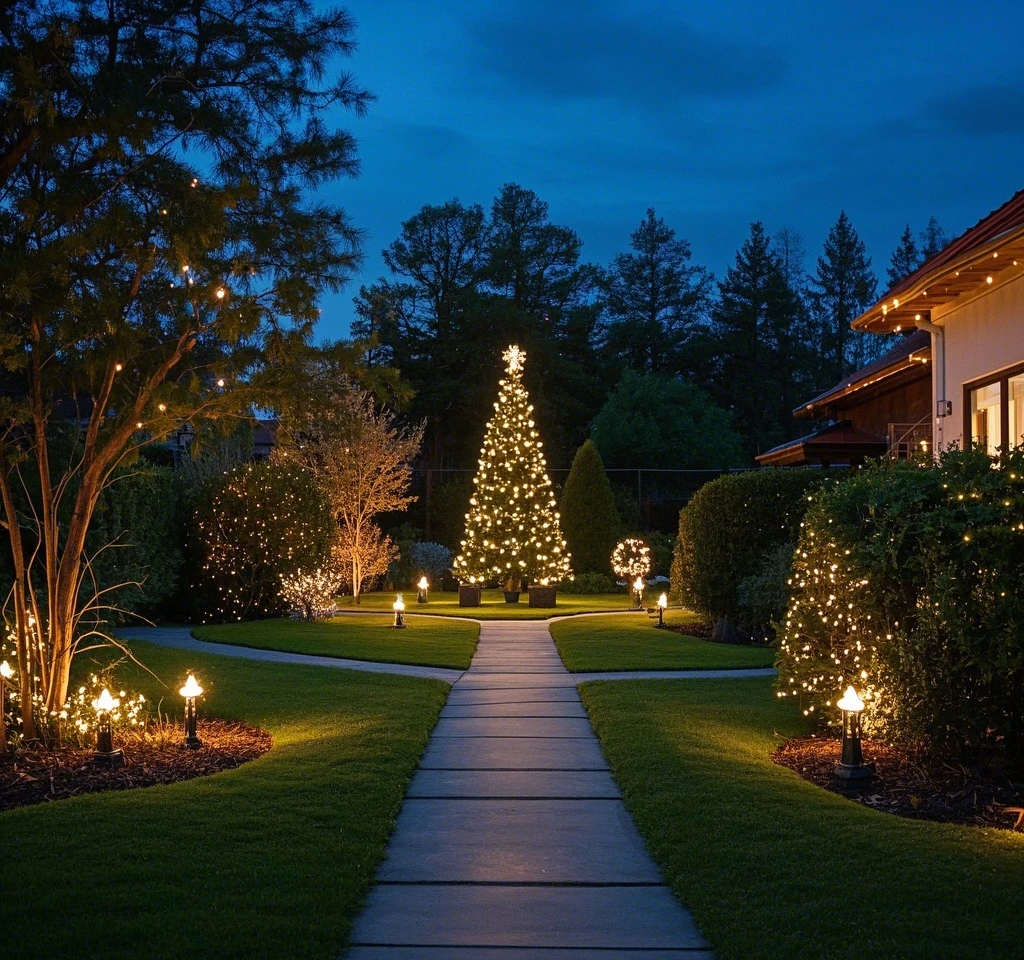In the sprawling suburbs and cozy urban backyards of North America, the yard is more than a patch of grass—it’s a canvas for self-expression. From vibrant Halloween displays to twinkling winter holiday setups, decorative solar lights have long been a staple of seasonal charm. But what if these humble fixtures could transcend their role as mere illumination? Imagine them as storytellers, weaving narratives through light and shadow, turning ordinary evenings into immersive art experiences. Narrative lighting elevates decorative solar lights into dynamic outdoor art, blending the practicality of solar technology with the magic of artistic projection. In North America, where yards are stages for community connection and personal creativity, these lights can transform nights into shared stories, celebrating seasons, cultures, and the rhythms of nature.

Elements of Artistic Lighting
To create a captivating nighttime art installation, decorative solar lights must go beyond basic glow. Their artistic potential lies in four key elements: projection, imagery, geometric patterns, and color layering.
- Projection: Unlike traditional lighting, projection casts intricate visuals—silhouettes of leaves, celestial patterns, or abstract shapes—onto surfaces like walls, fences, or trees. A solar-powered projector can beam a moonlit forest scene across a patio, creating an illusion of depth and movement.
- Imagery: The visuals themselves carry meaning. A sequence of projected images might depict a flock of migrating birds or a cascade of falling snow, evoking emotion and storytelling. These images can be static or subtly animated, using low-power LED projectors designed for solar efficiency.
- Geometric Patterns: Sharp, repeating shapes—spirals, fractals, or tessellations—add a modern, almost cosmic dimension to the design. When cast across a lawn or facade, these patterns create a sense of structure, drawing the eye into the narrative.
- Color Layering: Strategic use of color enhances mood. Soft blues and silvers evoke winter’s calm, while warm oranges and reds ignite autumnal vibrancy. By layering translucent filters or using RGB LEDs, lights can shift hues to match seasonal or emotional themes.
Together, these elements turn a simple solar light into a dynamic art piece, engaging viewers with visuals that dance across the night.
Narrative Frameworks and Seasonal Themes
Narrative lighting thrives on storytelling, and North America’s diverse seasons and cultural moments offer rich inspiration. By aligning decorative solar lights with thematic frameworks, they become more than decor—they become storytellers. Consider these narrative possibilities:
- Moon Phases: A series of lights projecting crescent, gibbous, and full moons across a garden can mirror the lunar cycle, creating a meditative rhythm. Each night, the projection shifts slightly, inviting viewers to track time through light.
- Star Trails: Inspired by long-exposure photography, lights can project swirling star patterns, evoking the vastness of the cosmos. This is especially poignant in rural areas with clear night skies, connecting the art to the environment.
- Festive Themes: For holidays like Halloween, lights might project playful ghosts or jack-o’-lanterns. During winter holidays, they could cast delicate snowflakes or menorah flames, celebrating cultural traditions with a modern twist.
- Natural Landscapes: Projections of rolling waves, rustling forests, or blooming flowers can bring distant ecosystems into a backyard, fostering a connection to nature’s cycles.
These themes can rotate with the seasons, keeping displays fresh and engaging. A single set of solar lights, equipped with interchangeable projection lenses or digital displays, can tell new stories year-round.
Technical Implementation
Creating a narrative lighting installation requires careful integration of technology to ensure both artistry and functionality. Key considerations include:
- Projection Overlays: Use low-power LED projectors powered by high-efficiency solar panels. These projectors can be fitted with customizable gobos (stencils) or digital screens to cast intricate designs. For example, a gobo might project a deer silhouette, while a digital display could cycle through a sequence of star patterns.
- Interactivity with Lights: Incorporate motion sensors or timers to make lights responsive. A sensor-triggered light might activate when someone approaches, casting a fleeting image of fireflies. Smart controllers, compatible with solar systems, can sync multiple lights for a cohesive narrative across a yard.
- Compatibility with Ambient Light: North American yards often face competing light sources—streetlights, porch lamps, or neighboring displays. To counter this, use high-lumen projectors with adjustable focus to ensure clarity. Anti-glare coatings on lenses can also minimize washout, preserving the vibrancy of projections.
Solar efficiency is critical. Panels should be positioned for maximum daylight exposure, and batteries must store enough energy to power projections through the night. Modern solar lights with lithium-ion batteries and adaptive brightness controls balance performance and sustainability.

Scene Design and Installation Guide
Designing a narrative lighting installation begins with envisioning the yard as a stage. Here’s a step-by-step guide to bring the vision to life:
- Site Assessment: Map the yard’s layout, noting surfaces like walls, trees, or fences that can serve as projection canvases. Consider sightlines from key viewing areas, such as patios or windows.
- Theme Selection: Choose a narrative that resonates with the season or local culture. For instance, a coastal New England yard might project crashing waves, while a Midwest garden could feature prairie grasses swaying in the wind.
- Light Placement: Position solar lights strategically. Ground-stake projectors work well for lawn displays, while wall-mounted units suit vertical surfaces. Ensure solar panels face south for optimal sunlight in North America.
- Projection Calibration: Adjust the angle and focus of projectors to align with the chosen surface. Test projections at dusk to fine-tune brightness and clarity.
- Layering Effects: Combine multiple lights for depth. For example, one light might project a static tree silhouette, while another overlays moving leaves. Use timers to stagger effects, creating a dynamic sequence.
- Maintenance Plan: Regularly clean solar panels and lenses to maintain performance. Check battery health seasonally to ensure consistent operation.
A well-designed scene might feature a front yard with a projected lunar cycle on a garage door, flanked by geometric patterns cast onto shrubs, creating a cohesive, immersive experience.
Safety and Neighborhood Coordination
While narrative lighting is enchanting, it must coexist harmoniously with neighbors and local regulations. Safety and courtesy are paramount:
- Light Pollution: Avoid overly bright or flashing lights that could disturb neighbors. Use downward-angled projectors and soft-focus beams to contain light within your property.
- Electrical Safety: Solar lights eliminate most electrical risks, but ensure wiring (if any) is weatherproof and secure. Check that stakes or mounts are stable to prevent tipping.
- Neighborhood Communication: In close-knit communities, inform neighbors about your plans, especially for large-scale displays. Invite them to enjoy the show or collaborate on a community-wide art installation.
- Local Regulations: Some areas have restrictions on outdoor lighting. Check municipal codes for rules on brightness or operating hours, particularly in urban settings.
By prioritizing safety and courtesy, your outdoor art can foster community goodwill rather than conflict.
Evaluation and Case Studies: From Backyards to Community Light Shows
The success of a narrative lighting installation lies in its ability to captivate and connect. Small-scale backyard displays can evoke wonder for family and friends, while larger community projects can redefine public spaces.
- Case Study 1: Suburban Halloween Display: In a Minnesota suburb, a family used solar-powered projectors to cast animated skeletons dancing across their front lawn. Motion sensors triggered the display as trick-or-treaters approached, delighting children and earning local acclaim. The setup used three lights with interchangeable gobos, costing under $200 and running entirely on solar power.
- Case Study 2: Community Winter Festival: In Portland, Oregon, a neighborhood coordinated a winter solstice light show. Each yard featured a unique projection—snowflakes, auroras, or star trails—powered by solar lights synced via a central controller. The event drew hundreds of visitors, fostering community pride and inspiring other towns to follow suit.
- Evaluation Metrics: Assess impact through viewer engagement (e.g., social media shares, neighbor feedback) and technical performance (e.g., battery life, projection clarity). Adjust designs based on feedback to enhance future displays.
These examples show how decorative solar lights can scale from intimate yards to vibrant community art, weaving narratives that resonate with North American audiences.
Conclusion
Narrative lighting transforms decorative solar lights into more than functional fixtures—they become storytellers, artists, and community builders. By blending projection, imagery, geometric patterns, and color with seasonal themes like moon phases or festive motifs, these lights create immersive outdoor art that celebrates North America’s love for yard culture. With thoughtful design, technical precision, and neighborly consideration, anyone can turn their backyard into a nighttime canvas, illuminating stories that linger long after the sun sets.


Leave a Reply